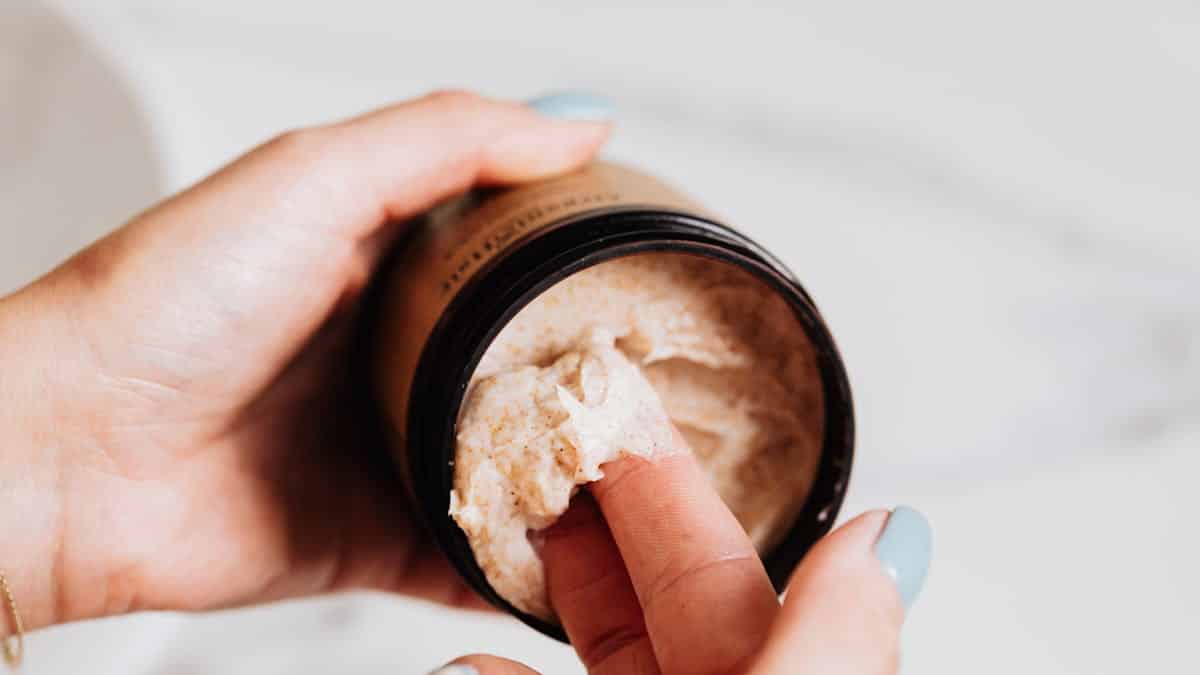Here is your complete guide to shea butter comedogenic rating.
Introduction to Shea Butter Comedogenic Rating
When it comes to skincare, understanding the comedogenic rating of ingredients is crucial for choosing products that are suitable for your skin type. Shea butter, a popular natural moisturizer, has gained significant attention in the beauty industry, but many people wonder about its comedogenic rating. This article will delve into the shea butter comedogenic rating, exploring its implications for various skin types and addressing common concerns.
The term “comedogenic” refers to the tendency of a substance to clog pores, which can lead to acne and breakouts. With the increasing popularity of shea butter in lotions, creams, and other skincare products, it’s essential to understand its effects on different skin types. In this article, we will explore the science behind shea butter, its benefits, and whether it truly deserves its reputation in the skincare world.
By the end of this article, you will have a comprehensive understanding of the shea butter comedogenic rating and how to use this ingredient effectively in your skincare routine.
Understanding Comedogenic Ratings
What is a Comedogenic Rating?
A comedogenic rating is a scale that measures how likely an ingredient is to clog pores. The scale typically ranges from 0 to 5:
- 0: Non-comedogenic (does not clog pores)
- 1: Very low likelihood of clogging pores
- 2: Low likelihood of clogging pores
- 3: Moderate likelihood of clogging pores
- 4: High likelihood of clogging pores
- 5: Very high likelihood of clogging pores
Understanding this scale helps consumers make informed decisions about which products are suitable for their skin type, particularly for those who are acne-prone or have oily skin.
Factors Influencing Comedogenicity
Several factors can influence whether an ingredient is comedogenic:
- Ingredient Composition: The chemical structure and properties of an ingredient play a significant role in its comedogenicity.
- Skin Type Considerations: Different skin types react differently to various ingredients. What may be non-comedogenic for one person could be problematic for another.
Common Ingredients and Their Comedogenic Ratings
| Ingredient | Comedogenic Rating |
|---|---|
| Shea Butter | 0 |
| Coconut Oil | 4 |
| Jojoba Oil | 2 |
| Olive Oil | 2 |
| Avocado Oil | 3 |
This table highlights some commonly used skincare ingredients and their respective comedogenic ratings, providing a quick reference for consumers.
The Science Behind Shea Butter
Composition of Shea Butter
Shea butter is derived from the nuts of the shea tree (Vitellaria paradoxa) native to Africa. It is rich in fatty acids and vitamins, making it an excellent moisturizer. The primary components include:
- Oleic Acid: A monounsaturated fatty acid known for its moisturizing properties.
- Stearic Acid: A saturated fatty acid that helps stabilize emulsions.
- Linoleic Acid: An essential fatty acid that can help maintain the skin’s barrier function.
- Vitamins A and E: Antioxidants that promote skin health and repair.
Potential Benefits for Skin
The unique composition of shea butter offers several benefits for the skin:
- Deep Hydration: Shea butter penetrates deeply into the skin, providing lasting moisture without feeling greasy.
- Anti-inflammatory Properties: It can soothe irritated skin and reduce redness.
- Skin Barrier Protection: Shea butter helps strengthen the skin’s natural barrier, preventing moisture loss.
Shea Butter in Skincare Products
Shea butter is commonly found in various skincare products such as:
- Moisturizers
- Body lotions
- Lip balms
- Hair conditioners
- Soaps
Its versatility makes it a favorite among formulators looking to create nourishing products.
Is Shea Butter Comedogenic?
Current Research Findings: Shea Butter Comedogenic Rating
Research on shea butter’s comedogenicity suggests that it has a low likelihood of clogging pores. According to various studies and expert opinions:
- Shea butter typically receives a comedogenic rating of 0, indicating that it is non-comedogenic.
- Many dermatologists recommend shea butter for individuals with dry or sensitive skin due to its hydrating properties.
Contrasting Views: Shea Butter Comedogenic Rating
Despite its low comedogenic rating, some users report experiencing breakouts after using shea butter. This discrepancy can be attributed to several factors:
- Individual Skin Type: Oily or acne-prone individuals may find that even non-comedogenic products can cause breakouts.
- Product Formulation: The overall formulation of a product containing shea butter can influence its comedogenicity. Additional ingredients may counteract shea butter’s benefits.
Personal Experiences and Anecdotes of Shea Butter Comedogenic Rating
Many users have shared their experiences with shea butter:
- Some individuals with dry skin praise it as a miracle moisturizer that alleviates dryness without causing breakouts.
- Others with oily or acne-prone skin report mixed results, suggesting that while pure shea butter may be safe, products containing it might not be suitable for everyone.
Using Shea Butter Safely: Shea Butter Comedogenic Rating
Best Practices for Application
To maximize the benefits of shea butter while minimizing potential issues:
- Patch Test First: Always perform a patch test before using new products containing shea butter.
- Use Sparingly: A small amount goes a long way; apply just enough to cover the area without excess.
- Combine with Other Non-Comedogenic Ingredients: Consider mixing shea butter with lighter oils like jojoba or argan oil.
Patch Testing and Sensitivity Considerations
If you have sensitive or acne-prone skin:
- Apply a small amount of pure shea butter on your inner arm.
- Wait 24 hours to see if any irritation occurs.
- If no reaction occurs, you can gradually introduce it into your routine.
Alternatives to Shea Butter Comedogenic Rating
While shea butter has many benefits, there are alternatives for those concerned about potential breakouts. Here are some non-comedogenic options:
Non-Comedogenic Alternatives
- Argan Oil
- Comedogenic Rating: 0
- Benefits: Lightweight moisturizer rich in vitamin E.
- Sunflower Oil
- Comedogenic Rating: 0
- Benefits: High in linoleic acid; great for maintaining hydration.
- Grapeseed Oil
- Comedogenic Rating: 1
- Benefits: Lightweight oil with antioxidant properties.
Comparison Table of Alternatives
| Alternative Ingredient | Comedogenic Rating | Key Benefits |
|---|---|---|
| Argan Oil | 0 | Lightweight; rich in vitamin E |
| Sunflower Oil | 0 | High in linoleic acid; hydrating |
| Grapeseed Oil | 1 | Antioxidant-rich; non-greasy |
This table provides a quick overview of alternative ingredients with their comedogenic ratings and key benefits.
Common Mistakes to Avoid When Considering Shea Butter Comedogenic Rating
Misunderstanding the Comedogenic Scale
One of the most common mistakes people make when evaluating shea butter is misunderstanding the comedogenic scale. The scale ranges from 0 to 5, where:
- 0: Non-comedogenic (does not clog pores)
- 1: Very low likelihood of clogging pores
- 2: Low likelihood of clogging pores
- 3: Moderate likelihood of clogging pores
- 4: High likelihood of clogging pores
- 5: Very high likelihood of clogging pores
Many sources claim that shea butter has a rating between 0 and 2, indicating it is generally safe for most skin types. However, the lack of extensive scientific research on shea butter’s comedogenicity means that these ratings should be taken with caution.
Assuming All Shea Butter Products are the Same
Another mistake is assuming that all products containing shea butter have the same comedogenic effects. The formulation of a product can significantly influence its overall comedogenicity:
- Concentration Matters: A product with a high concentration of shea butter may behave differently than one with only a small amount.
- Other Ingredients: The presence of other comedogenic ingredients can affect how your skin reacts to shea butter. For instance, if a product contains both shea butter and coconut oil (which has a high comedogenic rating), it may not be suitable for acne-prone skin.
Comparison of Shea Butter and Other Ingredients
| Ingredient | Comedogenic Rating | Notes |
|---|---|---|
| Shea Butter | 0-2 | Generally safe for most skin types |
| Coconut Oil | 4 | High likelihood of clogging pores |
| Jojoba Oil | 2 | Suitable for oily skin |
Ignoring Individual Skin Type
Ignoring individual skin type is another common pitfall. While shea butter may be rated as non-comedogenic, individual reactions can vary:
- Oily Skin: Those with oily or acne-prone skin might still experience breakouts from shea butter due to its consistency and oleic acid content.
- Dry Skin: Conversely, individuals with dry skin often find shea butter to be an excellent moisturizer without adverse effects.
Skipping Patch Testing
Many users overlook the importance of patch testing when trying new products containing shea butter. This step is crucial to determine how your skin will react:
- Apply a small amount of pure shea butter on a discreet area (like the inner arm).
- Wait 24 hours to observe any reactions.
- If no irritation occurs, you can gradually incorporate it into your routine.
Relying Solely on Online Ratings
Another mistake is relying solely on online ratings without considering the context or source. Many websites provide comedogenic ratings without backing them up with scientific research or credible sources. It’s essential to:
- Consult Reliable Sources: Look for information from dermatologists or reputable skincare brands.
- Understand Limitations: Recognize that comedogenic ratings can be subjective and may not apply universally.
Read Also: Shea Butter and Mango Butter.
Frequently Asked Questions (FAQs) about Shea Butter Comedogenic Rating
What is the comedogenic rating of shea butter?
The shea butter comedogenic rating is typically rated as 0, indicating that it is non-comedogenic and unlikely to clog pores.
Read Also: Is Shea Butter Comedogenic?
Can shea butter cause acne?
While shea butter has a low comedogenic rating, individual reactions may vary. Some people with oily or acne-prone skin may experience breakouts when using products containing shea butter due to other ingredients or personal sensitivities.
Read Also: Shea Butter Hair Food.
How do I know if a product is non-comedogenic?
Look for labels that specifically state “non-comedogenic.” Additionally, check ingredient lists for oils with low comedogenic ratings (0–2).
Read Also: Is Shea Moisture for Black Hair?
What should I look for in a non-comedogenic moisturizer?
Choose moisturizers that contain lightweight oils (like jojoba or argan oil), water-based formulations, and ingredients known for their hydrating properties without being heavy or greasy.
Read Also: Does Shea Butter Restore Hair Growth?
Conclusion
In conclusion, understanding the shea butter comedogenic rating is essential for anyone looking to incorporate this popular ingredient into their skincare routine. With a rating of 0, shea butter is generally considered non-comedogenic and safe for most skin types. However, individual reactions can vary based on personal sensitivities and product formulations.
Read Also: Aloe Vera Based Shampoo.
By following best practices when using shea butter and considering alternatives when necessary, you can enjoy its many benefits without compromising your skin’s health. Remember always to patch test new products and listen to your skin’s needs!
Read Also: Aloe Leave In Hair Conditioner.
By arming yourself with knowledge about the shea butter comedogenic rating, you can make informed decisions about your skincare choices—leading you toward healthier, more radiant skin!
Read Also: Aloe Face Cream.

